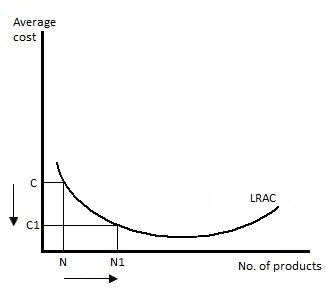Economies of scope exist where a firm can produce two products at a lower per unit cost than would be possible if it produced only the one
ECONOMIES OF SCOPE is an idea that was first explored by John Panzar and Robert Willig in an article published in 1977 in the Quarterly Journal of Economics entitled “Economies of Scale in Multi-Output Production”.
1. Relevance
The title of that landmark article may not sound very appealing, but it does make clear that economies of scope and economies of scale are closely related concepts.
Economies of scale is a fairly well known concept relevant to big producers like Intel, Boeing and Toyota.
In contrast, economies of scope is a lesser known concept particularly relevant to small and medium sized enterprises (SMEs) that may not have access to large markets or the ability to produce at scale. SMEs represent the overwhelming majority of global business activity, and are the world’s main source of job creation and economic growth. For example, SMEs currently account for more than 99% of businesses in Europe (Economist Intelligence Unit 2011).
With the Euro-zone at the brink of collapse, governments and business leaders may be well advised to revisit basic concepts like ‘economies of scope’. If properly understood, economies of scope could be used by SMEs to drive profit growth and reduce the risk associated with product failure.
2. Importance
Economies of scope provide firms with two key benefits:
- Lower average costs: If a company diversifies its product offering it may be able to lower the average cost of production. For example, McDonalds offers a range of different products (e.g. burgers, fries, sundaes and salads). As a result, it can achieve lower per unit costs by spreading its large overhead costs across a broad range of products. Lower per unit costs allow a company to do one of three things: (1) enjoy higher profit margin on each unit sold; (2) lower the price it charges customers and thereby increase market share; or (3) a combination of 1 and 2.
- Diversified revenue streams: By producing multiple products, a firm can diversify its revenue sources, which reduces the risk associated with product failure.
3. Economies of Scope
Economies of scope exist where a firm can produce two products together (joint production) at a lower average per unit cost of production than would be possible if it produced only one of those products (OECD glossary). Economies of scope have been found to exist in a range of industries including banking, publishing, distribution, and telecommunications.
Economies of scope and economies of scale are related concepts. The distinction is that ‘economies of scale’ refers to where the average cost of producing a unit of output decreases as output increases, whereas ‘economies of scope’ refers to where the average cost of producing a unit of output decreases as the number of different products increases.
3.1 Sources of economies of scope
There are 7 potential sources of economies of scope:
- Common inputs – Using more of the same inputs will increase bargaining power with suppliers. For example, Kleenex manufactures a range of products which use the same raw materials: tissues, napkins, paper towels, facial tissues, incontinence products and Huggies nappies.
- Joint production facilities – Plant and equipment can be more fully utilised. For example, a dairy manufacturer may be able to use its existing dairy production facilities to produce a range of different dairy based products: e.g. milk, butter, cheese and yoghurt.
- Shared overhead costs –The cost of certain fixed overhead costs can be shared across products. For example, McDonalds can produce hamburgers, French fries and salads at a lower average cost than it would cost to produce any of these goods separately. Each product shares overhead costs such as food storage, preparation facilities, restaurant space, toilets, car parks and play equipment.
- Marketing – The cost of advertising can be shared across products. For example, Proctor & Gamble produces hundreds of products from Gillette razors to Old Spice aftershave, and can therefore afford to hire expensive graphic designers and marketing experts and spread that cost across a broad range of products.
- Sales – Selling products is easier when salesmen can provide customers with a range of value options, as well as upsell and cross promote … “Would you like fries with that?”
- Distribution – Shipping a range of products is more efficient than shipping a single product. For example, Amazon sells an extremely broad range of products. As a result, it can negotiate favourable deals with freight companies.
- Diversified revenue streams – A firm that sells multiple products will have lower revenue risk because it is less dependent on any one product to sustain sales. More stable cash flows are attractive for three reasons. Firstly, they can be used to negotiate more favourable credit terms with banks. Secondly, a strong cash position can also be used to extend credit to customers and thereby increase sales. Thirdly, more stable cash flows can allow a firm to be more innovative with new product launches because the failure of any one product will have less impact on total revenues.
4. Diseconomies of scope
A firm that offers too many products may actually incur an increase in average per unit costs when it offers additional products. Reasons for diseconomies of scope may include:
- diluted competitive focus;
- lack of management expertise;
- higher raw material costs due to bottlenecks or shortages; or
- increased overhead costs.
🔴 Like this article?
Sharpen your edge in consulting
